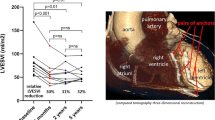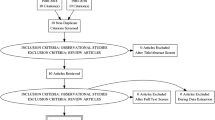Abstract
In the light of increasing use of surgical ventricular restoration in patients with advanced heart failure due to large transmural myocardial infarctions and left ventricular aneurysms, who are not eligible for cardiac transplantation, the need for guidelines to direct appropriate standardized therapy was felt. Extensive registry data did document improvements in quality of life with significant decreases in mortality. The surgical procedure underwent an evolutionary change with an expanding surgeon’s learning curve from the 1950s to now, documenting nearly 60 years of evolution. The technique of geometric repair was found to be superior to linear placation and excision of the aneurysm in various studies. However, meta-analysis reported favorable results following geometric repair in terms of increased ejection fraction and decreased mortality. But these analyses were plagued by the bias of different time frames of performance of the two surgical techniques, with linear repair being performed earlier and geometric repair later. Hence, these results were confounded by the surgeons’ learning curve. There was no randomized study involving surgical ventricular restoration, which was direly needed for guideline formation. In these patients with large left ventricular aneurysms and heart failure, it was necessary to know that if viable, ischemic myocardium was addressed by surgical revascularization and pharmacological therapy alone, there would be resultant decrease in left ventricular dimensions and improvements in function. The issue of whether these patients would require surgical ventricular restoration in addition needed to be addressed.
Access this chapter
Tax calculation will be finalised at checkout
Purchases are for personal use only
Similar content being viewed by others
References
White HD, Norris RM, Brown MA, Brandt PW, Whitlock RM, Wild CJ. Left ventricular end-systolic volume as the major determinant of survival after recovery from myocardial infarction. Circulation. 1987;76:44–51.
Jones RH, Velazquez EJ, Michler RE, Sopko G, Oh JK, O’Connor CM, et al. Coronary bypass surgery with or without surgical ventricular reconstruction. N Engl J Med. 2009;360:1705–17.
Dor V. Left ventricular reconstruction: the aim and the reality after twenty years. J Thorac Cardiovasc Surg. 2004;128:17–20.
Levy D, Kenchaiah S, Larson MG, Benjamin EJ, Kupka MJ, Ho KK, et al. Long-term trends in the incidence of and survival with heart failure. N Engl J Med. 2002;347:1397–402.
Athanasuleas CL, Buckberg GD, Stanley AW, Siler W, Dor V, Di Donato M, for the RESTORE group, et al. Surgical ventricular restoration in the treatment of congestive heart failure due to post-infarction ventricular dilation. J Am Coll Cardiol. 2004;44:1439–45.
Shah PJ, Hare DL, Raman JS, Gordon I, Chan RK, Horowitz JD, et al. Survival after myocardial revascularization for ischemic cardiomyopathy: a prospective ten-year follow-up study. J Thorac Cardiovasc Surg. 2003;126:1320–7.
Takaro T, Hultgren HN, Lipton MJ, Detre KM. The VA cooperative randomized study of surgery for coronary arterial occlusive disease II. Subgroup with significant left main lesions. Circulation. 1976;54:III107–17.
Sheldon WC, Loop FD, Proudfit WL. A critique of the VA cooperative study. Cleve Clin Q. 1978;45:225–30.
Kloner RA, Bolli R, Marban E, et al. Medical and cellular implications of stunning, hibernation, and preconditioning: an NHLBI Workshop. Circulation. 1998;97:1848–67.
Buckberg GD, Athanasuleas CL. The STICH trial: misguided conclusions. J Thorac Cardiovasc Surg. 2009;138:1060–4.
Author information
Authors and Affiliations
Rights and permissions
Copyright information
© 2012 Springer-Verlag London
About this chapter
Cite this chapter
Parachuri, V.R., Adhyapak, S.M. (2012). Recent Controversies: To STICH or Not to STICH?. In: Ventricular Geometry in Post-Myocardial Infarction Aneurysms. Springer, London. https://doi.org/10.1007/978-1-4471-2861-8_10
Download citation
DOI: https://doi.org/10.1007/978-1-4471-2861-8_10
Published:
Publisher Name: Springer, London
Print ISBN: 978-1-4471-2860-1
Online ISBN: 978-1-4471-2861-8
eBook Packages: MedicineMedicine (R0)




